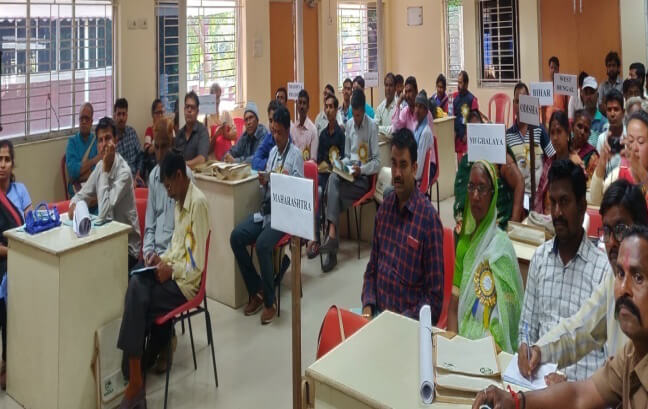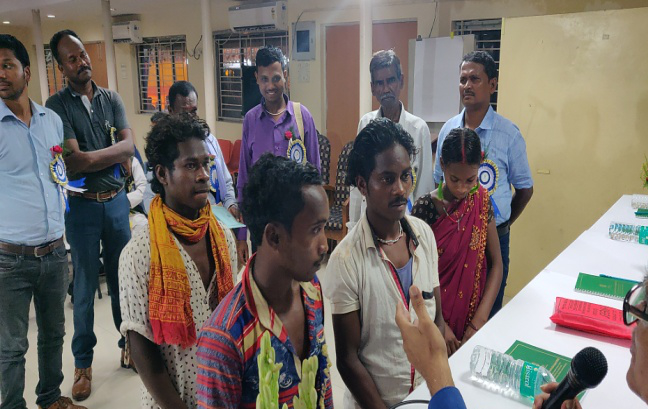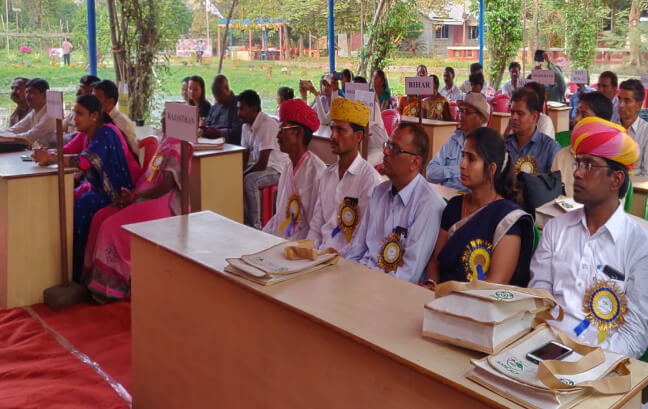
Tribes in India, although having a significant population of more than eight percent are still most marginalised groups in society even after more than 70 years of independence. It becomes a challenging issue for any nation to mainstream the marginalized group in such a way that while the Tribes maintain their traditional culture they also enjoy the feeling of oneness and self esteem with the general population.
The Tribes while maintaining their own traditional culture will have an aspiration for better education, adoption of appropriate technology, sustainable livelihood, safe and healthy environment and need to grow in the contemporary world.
-
Efforts of the Government Initiatives For Mainstreaming
The Tribal Sub Plan was initiated during Fifth Five Year Plan to have a focused emphasis on the holistic development of the tribal areas and the Tribal communities. The basic objective of Tribal Sub-Plan is to channelise the flow of outlays and benefits from the general sectors in the Central Ministries/Departments for the development of Scheduled Castes and Schedules Tribes at least in proportion to their population, both in physical and financial terms (http://www.rcdcindia.org/EvDocumentConceptTSP.pdf ). It has two broad objectives, (i) socioeconomic development of STs; and (ii) protection of tribals against exploitation. It aims to lessen gaps between the STs and general population in health, education, communication and other areas of basic amenities of life by providing legal and administrative support. The Sub-Plan also implements income-generating schemes to boost the income of the tribal communities on a sustainable basis by taking into account their aptitude and skill.The prime object of the Tribal Sub Plan is development of tribal areas and all round development of tribal communities in accordance with their needs. Dedicated institutional mechanisms like ITDA/ITDP, TRIFED, NSTFDC, LAMP etc are created to promote economic empowerment and welfare of the tribal population. Apart from the various schemes and programs, two landmark Acts, FRA 2006 to empower the tribal people with legal land rights to ensure their livelihood security and PESA 1996 to empower them to have access and control over the biodiversity resources for sustainable utilization are directed towards social inclusion and economic empowerment. The 12th Five Year Plan under the section social inclusion sets the objective of overall improvement of the socio economic condition of the tribal people with a focus on Tribal Sub Plan (TSP) and Special Central Assistance (SCA) to TSP.

-
IBRAD Initiatives
There has not been dearth of policies, acts and schemes to improve the human development condition of the tribal community and bring them in the fold of inclusive growth and development. However, while developing the strategy of tribal development often their perceptions, needs and aspirations are overlooked. The mainstreaming of the tribal community can not be achieved ignoring their habitat and culture that evolved around forest and natural resource base. Conservation of the natural resources especially the forest and biodiversity that are integral to the tribal culture and their livelihood are the priority.

-
Network and mainstreaming – SANCALP
SANCALP as a forum provides an opportunity for the tribes and other community to interact and value the cultural diversity and tradition of each other. Such forum, periodical workshops and exposure visits help in mainstreaming through a better understanding of their own bio-cultural diversity as the complex interplay between biodiversity and the cultural diversity which has imperative impacts on the environmental and cultural sustainability.
Aichi Targets of the CBD, in particular , enhancing protection, conservation and customary sustainable use of biodiversity for local and traditional livelihoods and the equal sharing of the benefits arising from the use of traditional knowledge and biodiversity.
IBRAD has created a national forum, SANCALP where the tribes and non-tribes assemble from twelve states across the country at the residential national convention share and value their rich experiences of their efforts in conservation of natural resources and sustainable livelihood.
The tribal community gets the opportunity to showcase their endeavor and get recognition which boosts their morale and self-esteem.
The outstanding contributors receive the award, which they carry in their state and display in their village as a prestigious symbol of their contribution at the state level and national level.



